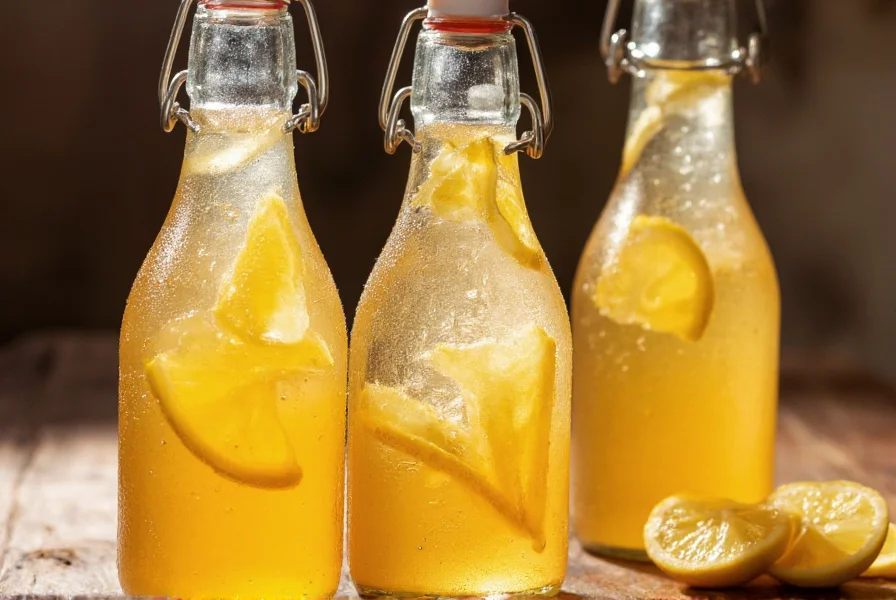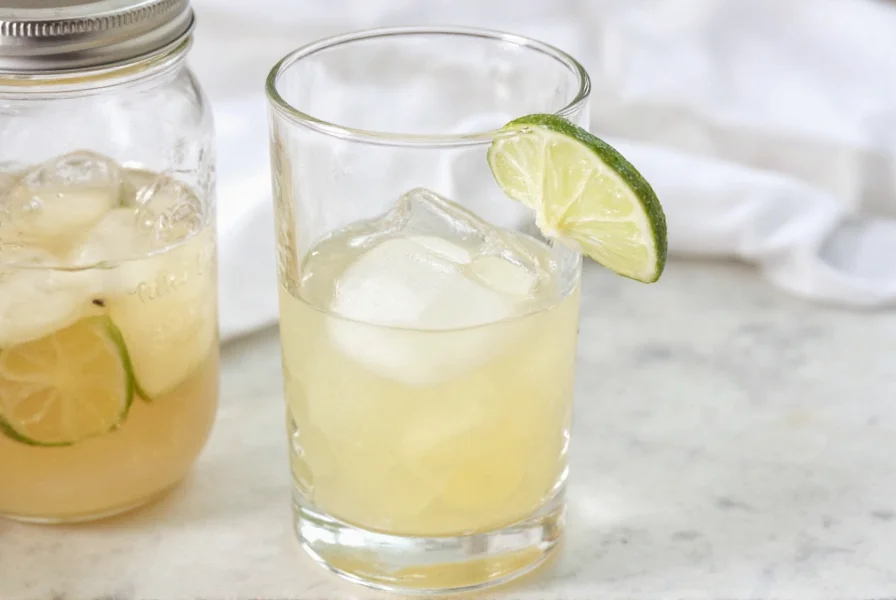Making authentic homemade ginger ale connects us to centuries-old beverage traditions while offering a healthier alternative to commercial sodas filled with artificial flavors and high-fructose corn syrup. Unlike store-bought versions that often contain little actual ginger, this recipe harnesses the full flavor and health benefits of fresh ginger root through natural fermentation.
Traditional ginger ale originated as a medicinal tonic in 19th century Ireland before evolving into the popular soft drink we know today. The authentic version relies on wild yeast or a ginger bug starter for natural carbonation, creating subtle probiotic benefits absent in commercially produced alternatives. This method gives you complete control over ingredients and sweetness level, allowing customization to your personal taste preferences.
Essential Ingredients for Perfect Homemade Ginger Ale
The beauty of this easy homemade ginger ale recipe lies in its simplicity. You'll need just five basic ingredients, all readily available at any grocery store:
| Ingredient | Amount | Purpose |
|---|---|---|
| Fresh ginger root | 1 cup, grated | Provides signature flavor and natural spiciness |
| Organic cane sugar | ¾ cup | Feeds fermentation process and balances ginger heat |
| Filtered water | 4 cups | Base liquid (chlorine-free for proper fermentation) |
| Lemon juice | ¼ cup | Adds brightness and helps control fermentation |
| Ginger bug or whey | 2 tablespoons | Natural fermentation starter (see instructions below) |

Step-by-Step Preparation Guide
Follow these detailed instructions for successful traditional ginger ale fermentation. Precision matters in this natural ginger ale without preservatives recipe to ensure proper carbonation and flavor development.
Creating Your Ginger Bug Starter (3-5 Days)
The foundation of authentic homemade ginger ale is a healthy ginger bug starter, which provides the natural yeast and bacteria needed for fermentation:
- Combine 2 tablespoons grated ginger, 2 tablespoons sugar, and 1 cup filtered water in a clean glass jar
- Cover with cheesecloth and secure with a rubber band
- Stir twice daily and feed with 1 tablespoon each of ginger and sugar
- After 3-5 days, your starter should show small bubbles and have a slightly tangy aroma
- When active, your ginger bug is ready to use in the main recipe
Brewing the Ginger Ale (20 Minutes Active, 4-5 Days Fermentation)
- Prepare ginger syrup: Bring 2 cups water to boil, add grated ginger, and simmer for 10 minutes
- Add sweetener: Remove from heat, stir in sugar until dissolved, then add lemon juice
- Cool completely: Let mixture cool to room temperature (critical for proper fermentation)
- Dilute: Add remaining 2 cups filtered water to cooled ginger syrup
- Add starter: Stir in 2 tablespoons active ginger bug or ¼ cup whey
- Bottle: Pour into flip-top glass bottles, leaving 1-2 inches of headspace
- Ferment: Store at room temperature away from direct sunlight for 2-4 days
- Refrigerate: Once carbonated to your liking, refrigerate to slow fermentation
Troubleshooting Common Issues
Even with this straightforward how to make ginger ale from scratch guide, you might encounter some challenges. Here's how to address them:
- Not fizzy enough: Extend room temperature fermentation by 12-24 hours. Ensure bottles are sealed properly and you left adequate headspace.
- Too sweet: The fermentation process naturally reduces sweetness. Allow additional fermentation time before refrigerating.
- Overly spicy: Next batch, reduce ginger quantity or strain the syrup through cheesecloth before bottling.
- No carbonation: Check that your ginger bug was active. Ensure proper room temperature (70-75°F/21-24°C) during fermentation.
- Bottles exploding: This indicates over-fermentation. Always refrigerate once carbonation reaches desired level and use proper glass bottles designed for pressure.
Flavor Variations and Serving Suggestions
One of the advantages of this homemade ginger ale carbonation recipe is the ability to customize flavors. Try these variations:
- Lemon-ginger: Add extra lemon zest during syrup preparation for brighter citrus notes
- Turmeric-ginger: Include 1 teaspoon grated turmeric for anti-inflammatory benefits and golden color
- Spiced: Add cinnamon stick or cloves during syrup simmering for holiday flavors
- Fruit-infused: Add ¼ cup mashed berries or pineapple juice before bottling
Serve chilled over ice with a lime wedge for the perfect refreshing beverage. This naturally fermented ginger ale makes an excellent mixer for cocktails or a satisfying non-alcoholic alternative. For best flavor development, allow the finished product to mellow in the refrigerator for 2-3 days before serving.

Storage Guidelines
Proper storage ensures your homemade ginger ale maintains optimal flavor and carbonation:
- Refrigerate after reaching desired carbonation level to slow fermentation
- Consume within 2-3 weeks for best quality (continues to ferment slowly even refrigerated)
- Always open bottles over a sink—pressure can build up significantly
- Store bottles upright to minimize sediment disturbance
- If using plastic bottles, squeeze test for firmness to gauge carbonation level











 浙公网安备
33010002000092号
浙公网安备
33010002000092号 浙B2-20120091-4
浙B2-20120091-4